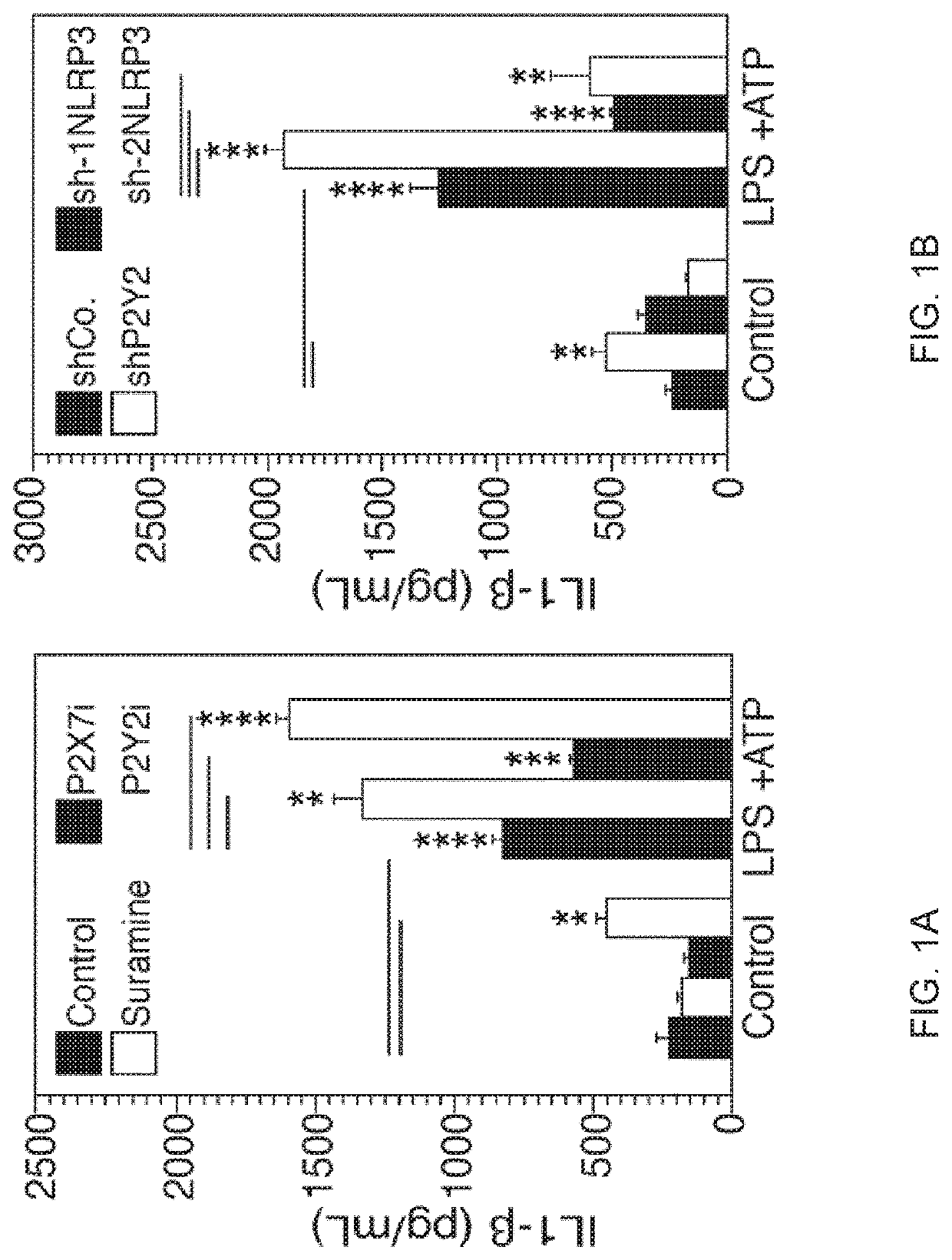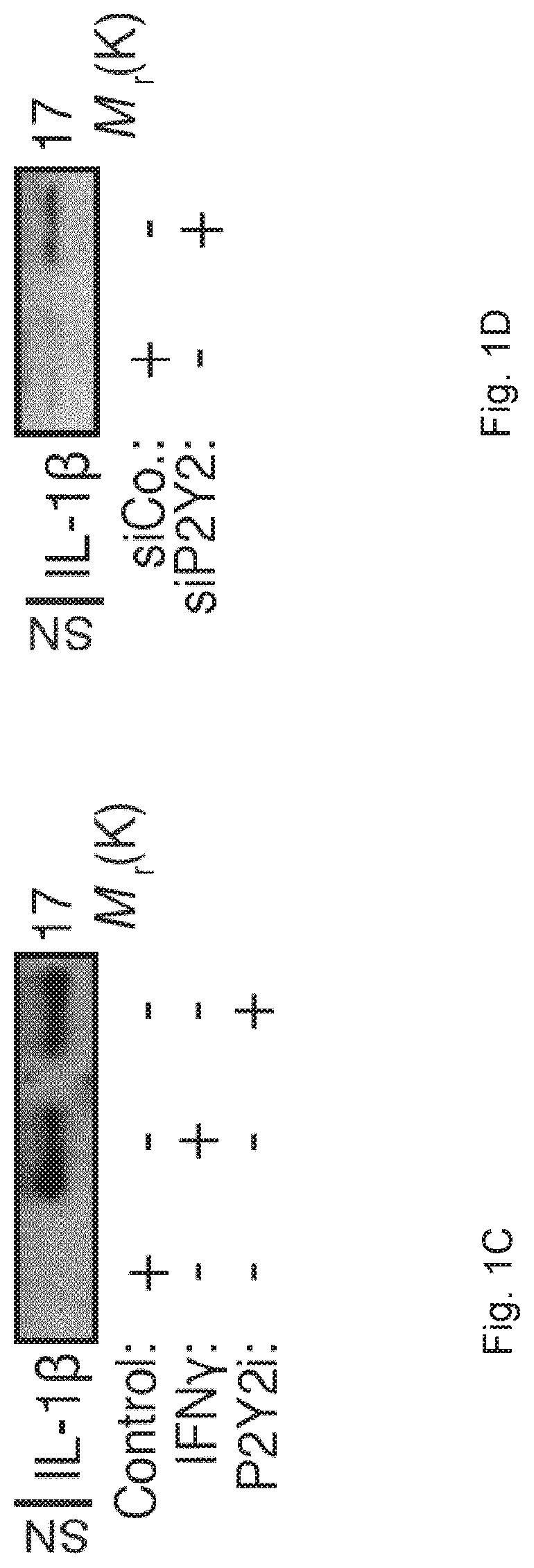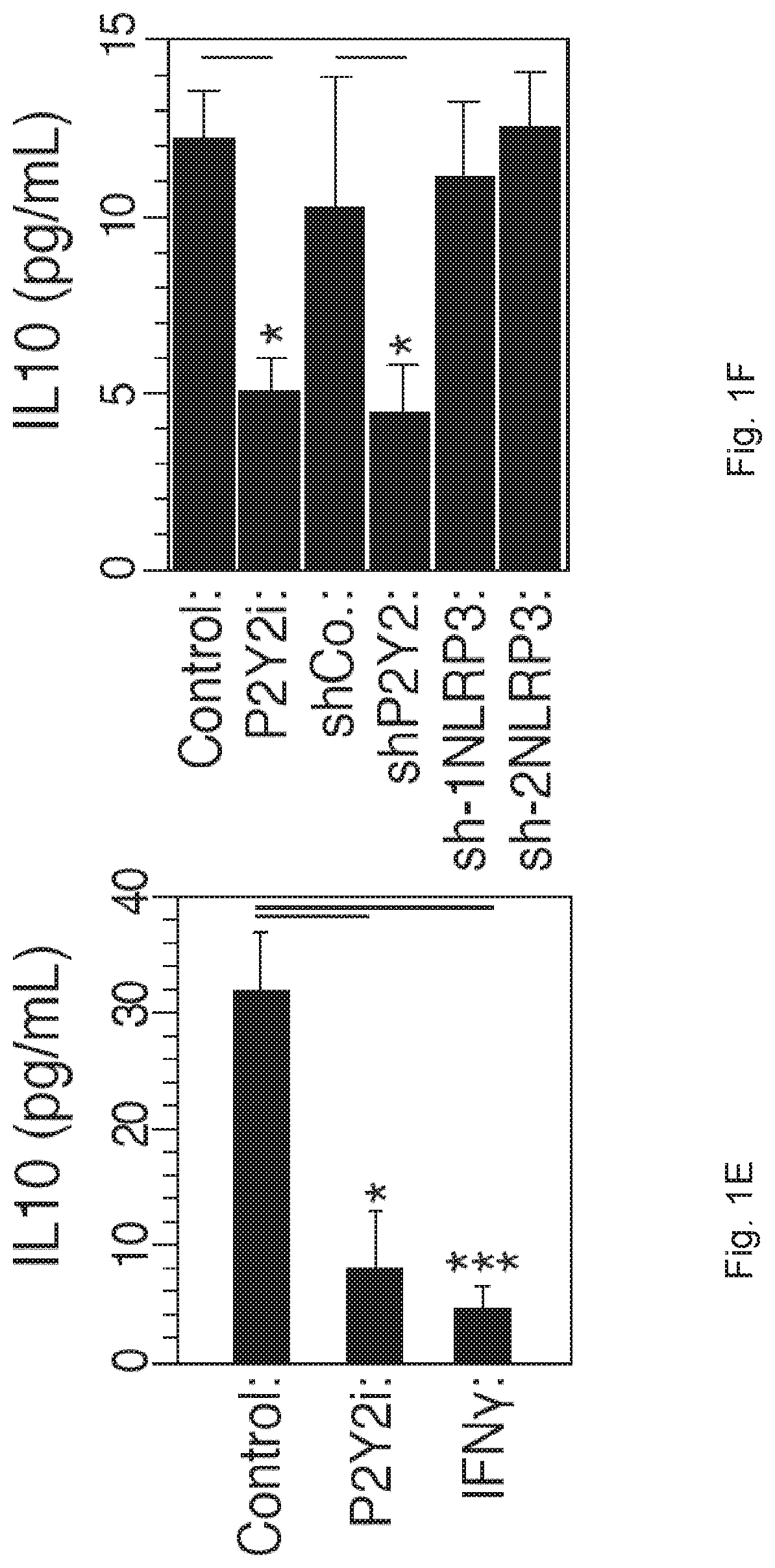Methods and Pharmaceutical Composition for Modulation Polarization and Activation of Macrophages
a macrophage and polarization technology, applied in the direction of drug compositions, peptide/protein ingredients, immunological disorders, etc., can solve the problem of uncontrolled macrophage inflammatory response and could become pathogeni
- Summary
- Abstract
- Description
- Claims
- Application Information
AI Technical Summary
Benefits of technology
Problems solved by technology
Method used
Image
Examples
example
[0062]Material & Methods:
[0063]Cells and Culture Conditions.
[0064]The monocyte cell line THP-1 and GFP-LC3+ THP-1 cells were maintained in RMPI-1640-Glutamax medium supplemented with 10% heat inactivated fetal bovine serum (FBS) and 100 UI / mL penicillin-streptomycin (Life technology). GFP-LC3+ THP-1 cells were obtained from J. Kehrl35. HeLa cells stably transfected with the Env gene of HIV-1LAI / IIIB (HeLa Env+), HeLa cells transfected with CD4 (HeLa CD4+CXCR4+) were selected in medium containing 500 μg / ml G418 and 293T cells were cultured in Dulbecco's modified Eagle's medium (DMEM)-Glutamax supplemented with 10% FBS and 100 U / ml penicillin-streptomycin, in the absence or presence of the indicated concentrations of inhibitors. To generate Monocytes Derived Macrophages (MDMs) for HIV-1 infections, CD14+ monocytes were isolated from peripheral blood mononuclear cells (PBMCs) by positive selection using anti-CD14 beads (Miltenyi Biotec). Buffy coats from healthy donors were obtained fr...
PUM
| Property | Measurement | Unit |
|---|---|---|
| pore size | aaaaa | aaaaa |
| temperature | aaaaa | aaaaa |
| swelling | aaaaa | aaaaa |
Abstract
Description
Claims
Application Information
 Login to View More
Login to View More - R&D
- Intellectual Property
- Life Sciences
- Materials
- Tech Scout
- Unparalleled Data Quality
- Higher Quality Content
- 60% Fewer Hallucinations
Browse by: Latest US Patents, China's latest patents, Technical Efficacy Thesaurus, Application Domain, Technology Topic, Popular Technical Reports.
© 2025 PatSnap. All rights reserved.Legal|Privacy policy|Modern Slavery Act Transparency Statement|Sitemap|About US| Contact US: help@patsnap.com



